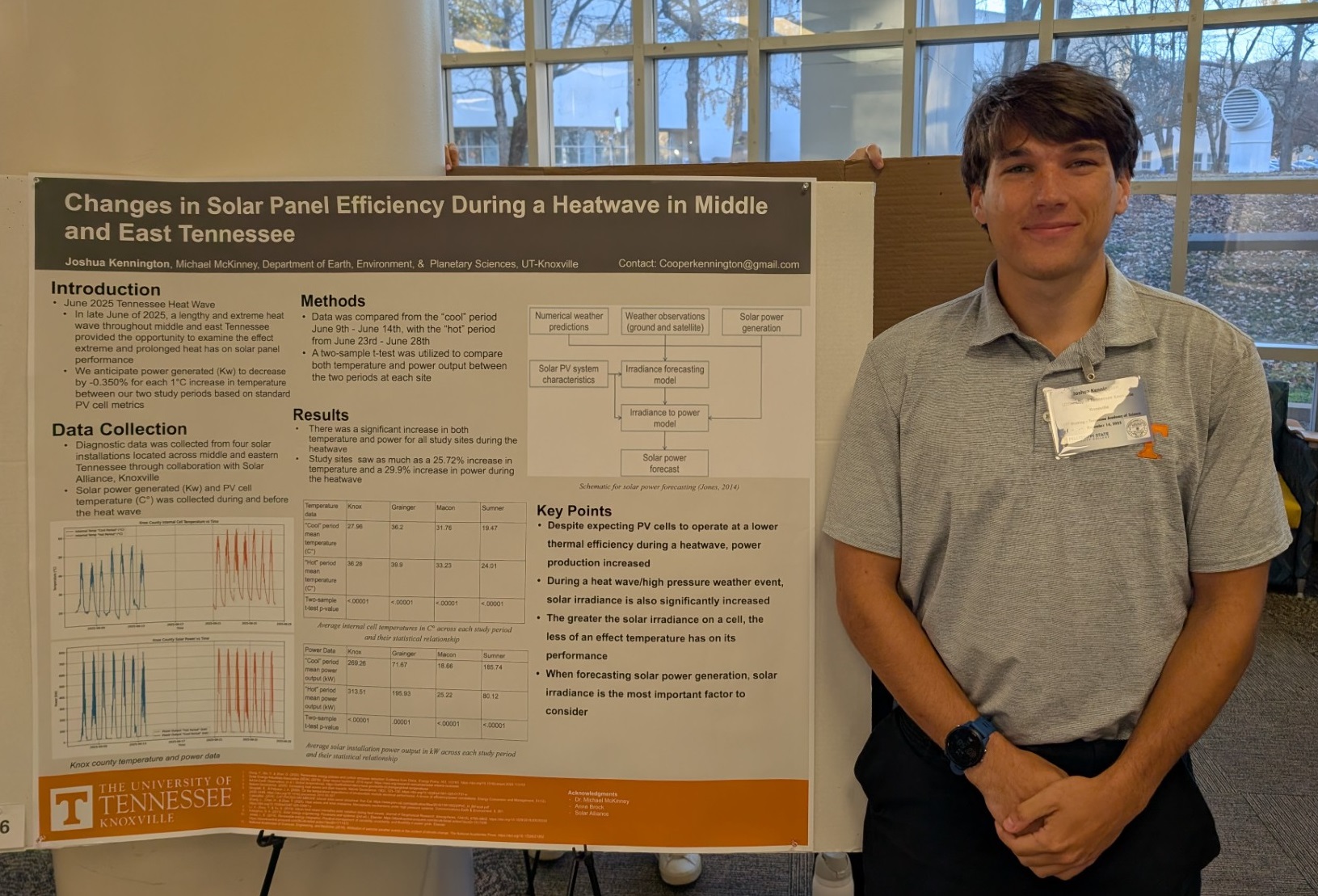
Last Updated on November 14, 2025 by Anne Brock
Just what happens to production levels as temperatures fluctuate in the summer while solar photovoltaic systems are producing abundant, clean energy? A dual-degree student from the University of Tennessee set out to find some answers, during the summer when he visited Solar Alliance Southeast as part of a mentor relationship through the University of Tennessee’s College of Emerging and Collaborative Studies.
“I liked seeing the business side of things. Also, what stood out to me was how much even a small-scale solar + storage system like the one at Crawford House could improve sustainability,” said Joshua Cooper Kennington, who plans to finish two bachelor degrees in Spring 2026 in both Physics & Geology with a Concentration in Environmental Studies. He was recommended to visit SASE as part of a summer internship program, conducting independent research under the direction of UT Environmental Studies Director, Professor Dr. Michael McKinney. Kennington was able to visit multiple sites where SASE had designed and built solar arrays, including at the megawatt KUB Community Solar project in Knoxville. He also had direct access to ask questions about the design engineering and production process.
Kennington learned from SASE that solar arrays are designed with estimated production based on the variations seen in Typical Meteorological Year weather data. He wanted to learn how extremely hot days in the summer would affect the production of clean solar energy, even though that energy comes from light and not heat. He examined data to see how extreme heat might affect the efficacy of solar panel production.
Kennington said, “I was surprised that solar generation improved over a significantly hotter period of time compared to the cooler period of time.” He found that solar production unanimously increased during the hotter period of June 21st-28th, as compared to the cooler period of June 7th-13th. He viewed this as an unexpected result, since solar panels tend to decrease in efficacy as internal temperatures reach extremes. The finding underscored the importance of irradiance. “I think it goes to show that the atmospheric conditions i.e. a high pressure system, which create extreme heat, have a lot more bearing over solar production than the actual heat itself.”
Kennington will present his research paper and poster at the Tennessee Academy of Sciences meeting in November.
